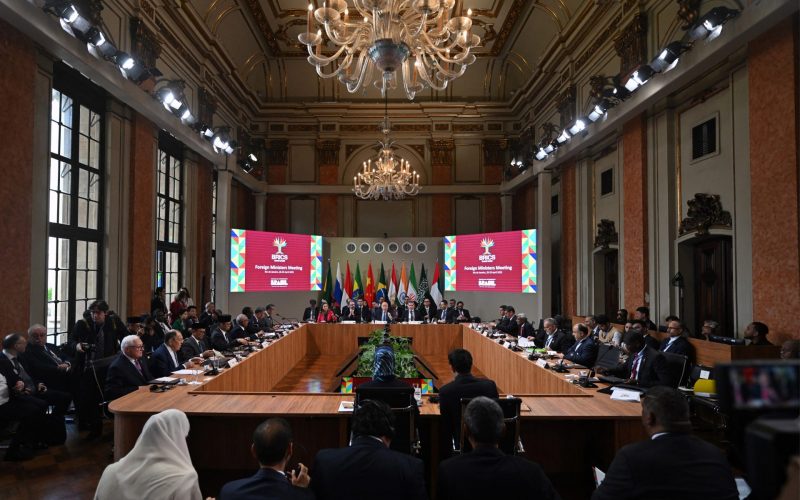The theme of this year’s Lekgotla, “building on the contribution of mining since the advent of democracy”, resonates strongly with the government’s efforts to promote mineral beneficiation. These aim to increase mining’s contributions to job creation, skills development and value-added processing and manufacturing in the local economy.
To view the SAIIA resources and experts available for the 2014 Mining Lekgotla, click here.
If carefully executed within an inclusive consultative process backed by constant re-evaluations, useful insights could emerge on what really works and how best myriad role players, including the industry, can work with government. Yet, turning beneficiation policies into practical interventions that can augment the mining sector’s developmental contributions requires painstaking, hard work – one anchored on a shared vision of the type seldom seen in the divisive debate on beneficiation in South Africa.
Controversy
Important industry players have voiced their concern over the government’s approach to beneficiation, including certain provisions in the Mineral and Petroleum Resources Development Amendment Bill passed by parliament in March 2014. Crucially, the recently appointed mineral resources minister, who is one of the keynote speakers at this year’s Lekgotla, has advised that a presidential assent to the Bill be withheld to allow for a detailed re-evaluation. Its most contested provisions include proposals to secure some minerals at a ‘developmental’ price for beneficiation and to restrict export of minerals classified by the minister as ‘strategic’. Though unspecified, these could include coal, diamond, iron ore, copper, magnetite as well as platinum, phosphate, cement and construction minerals.
As government and the industry address the challenges inherent in mineral beneficiation, mutual support, engagement and collective adaptive learning will be needed to turn this into a meaningful economic proposition that produces win-win outcomes for all stakeholders.
However, the unresolved challenges facing the sector, and the more practical obstacles regarding competitive factor inputs (such as skills and electricity), cast question marks on the broader preparations around the government’s beneficiation plans.
Enablers of Beneficiation
Indeed, where beneficiation has failed, it is often as a result of inadequate consideration of key enabling factors. The much talked about example of Botswana’s negotiation for the relocation of De Beers’ diamond processing operations from London to Gaborone occurred against a backdrop of detailed discussions focused on sufficient advance preparation. This also came on the back of co-operative efforts to create an attractive downstream environment, specifically through the construction of a Diamond Technology Park and a consultative legislative process which optimised regulations covering employment, taxes and exchange rate.
In Zambia, a similarly calibrated policy was implemented, based on incentives such as allowing companies to deduct cost of refining and smelting from the 6% mineral royalty. A 15% export tax on concentrates was also phased in to incentivise companies to refine ores before export. Zambia impressively reached 63.5% figures for processed copper exports as a result.
By contrast, less successful experiments point to the absence of preparation and weak stakeholder co-ordination. In Zimbabwe, the government imposed a ban on chrome exports in 2011, ostensibly to develop domestic refining capacity despite opposition from the industry.
The ban was eventually relaxed as mines shut down owing to the lack of smelter capacity and the loss of thousands of jobs and revenue. In the DRC, an abrupt ban on copper and cobalt ore exports by the central government was rejected by the Katanga provincial administration on the grounds of insufficient electricity and skills to run processing plants.
A major downside of forced or poorly designed beneficiation is that it risks subsidising downstream inefficiency which could deter investment.
It is vital that all key role players work together to carefully identify competitive advantages, as part of a broader set of discussions on economic feasibility. Beneficiation is also likely to work well where physical and human capital levels are already high. Absent these, government and industry must converse on devising policies to help foster them to better prepare the ground. Key considerations must include skills and energy inputs, but also other factors like water supply and physical infrastructure, all essential prerequisites for meaningful mineral value addition.
On another level, companies need to do more on “social” beneficiation – essentially forms of investments and engagement in the community that will both enhance miners’ social licence and help augment the pool of competitive factor inputs like skills, which could make beneficiation meaningful overtime. This might also draw mining companies closer to communities and serve as a bulwark against unreasonable government pressure for economically sub-optimal beneficiation.
No one-size-fits-all
In conclusion, partnerships and trust is needed, not just legislation.
Beyond regulation, business-state relationships must be sufficiently robust to accommodate the type of mutual support and understanding needed to build up factor inputs, develop capacities and promote joint learning. Experience in the Southern African region reveals that there is no one-size-fits-all. This underscores the importance of tailoring policies carefully to reflect country specificities in terms of the regulatory environment and competitive factor inputs.
Some of the tools available to government, which need further refining to get the balance right, include more robust but flexible export tax regimes to promote local value addition in a way that does not undermine businesses. More crucially, there is a growing need for plans on beneficiation to consider possible external strategic partnerships such as with major minerals consumers like China. The scale of China’s copper smelting and refining activities, for example, makes it implausible that any smaller player in Africa can go it alone on copper processing and value addition.
If they are to become more than just talk shops, stakeholder gatherings like the Mining Lekgotla must do more of the careful reflection needed to work out what is possible and the concrete steps required to overcome obstacles in the way of productive minerals beneficiation.








